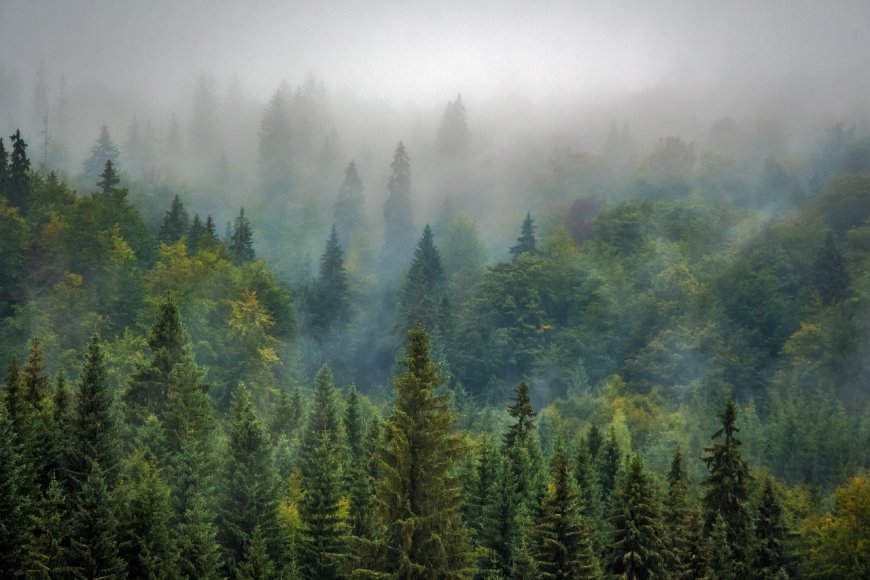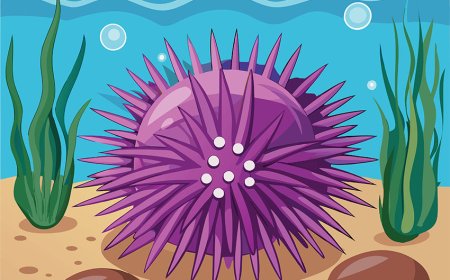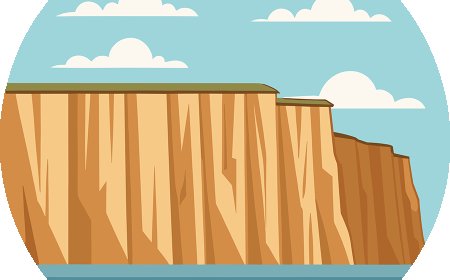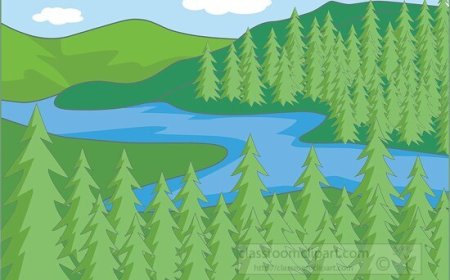What Are Landforms? Types, Examples, and Facts for Students
Learn what landforms are, how they form, and why they matter. Discover different types of landforms—mountains, valleys, plateaus, and more—in this kid-friendly geography article with definitions, examples, and fun facts.

🌍 What Are Landforms?
Landforms are the natural shapes and features of Earth's surface. They include mountains, valleys, plains, hills, and many other formations that make up the landscape we see around us. Landforms can be big or small, high or low, and found on land or under the ocean. They are constantly changing over time due to forces such as wind, water, ice, and plate tectonics.
Landforms help define different environments and affect where people live, what they eat, how they travel, and how they interact with nature. Understanding landforms is a big part of physical geography, the study of Earth's natural features.
🧪 How Are Landforms Created?
Landforms are shaped by both internal forces (coming from inside Earth) and external forces (coming from outside Earth):
Internal Forces
These come from inside Earth and include:
- Tectonic plates: Large pieces of Earth's crust that move and crash into each other.
- Earthquakes: Sudden shaking that can lift or break the land.
- Volcanoes: Erupting molten rock (magma) can form mountains or islands.
External Forces
These shape the land from above and include:
- Erosion: When water, wind, or ice wears down rock.
- Weathering: When rocks break down into smaller pieces due to rain, temperature, or chemicals.
- Deposition: When materials like sand or soil are carried and dropped in new places.
These processes work slowly over thousands or millions of years, constantly reshaping Earth’s surface.
🏞️ Major Types of Landforms
Landforms are usually grouped based on their shape, size, and how they were formed. Here are some of the main categories:
🏔️ Mountains
Mountains are tall, rocky landforms that rise high above the surrounding land. They often have peaks (pointed tops) and are formed by tectonic activity like the collision of Earth's plates.
Examples:
- The Himalayas (Asia) – home to Mount Everest
- The Rocky Mountains (North America)
- The Andes (South America)
🏞️ Valleys
Valleys are low areas between hills or mountains, often with rivers running through them. They are usually shaped by erosion from water or glaciers.
Types of Valleys:
- V-shaped valleys (formed by rivers)
- U-shaped valleys (formed by glaciers)
Examples:
- The Great Rift Valley (Africa)
- Yosemite Valley (United States)
⛰️ Hills
Hills are raised areas of land that are smaller and more rounded than mountains. They can form from erosion, volcanic activity, or the buildup of rock and soil.
Examples:
- The Chiltern Hills (United Kingdom)
- The Black Hills (United States)
🌄 Plateaus
Plateaus are large, flat areas of land that are raised high above the land around them. They are formed by uplift from tectonic activity or lava flows.
Examples:
- The Colorado Plateau (United States)
- The Deccan Plateau (India)
🌾 Plains
Plains are wide, flat stretches of land with few trees or hills. They are often good for farming and are formed by deposition of soil and sediments.
Examples:
- The Great Plains (North America)
- The Indo-Gangetic Plain (India and Pakistan)
🌋 Volcanoes
Volcanoes are openings in Earth's crust where molten rock, gases, and ash erupt. Over time, these eruptions build cone-shaped mountains.
Examples:
- Mount Fuji (Japan)
- Mount Kilimanjaro (Tanzania)
- Mauna Loa (Hawaii, USA)
🏖️ Coastal Landforms
These are landforms near oceans, seas, or lakes. They are shaped by waves, tides, and currents.
Examples:
- Beaches – made from sand or pebbles
- Cliffs – steep drops near the shore
- Bays and Coves – curved inlets of the sea
🏜️ Deserts
Deserts are dry, barren landforms with little rain and very few plants. Some deserts have sand dunes formed by wind.
Examples:
The Sahara Desert (Africa)
The Gobi Desert (Asia)
🌟 Fun Facts About Landforms
- Mount Everest is the highest landform on Earth, standing over 29,000 feet tall.
- The Grand Canyon was carved over millions of years by the Colorado River.
- Some islands are actually underwater volcanoes that rose above sea level.
- Deserts can be hot (like the Sahara) or cold (like Antarctica).
- Plate tectonics move about as fast as your fingernails grow!
🧒 Kid-Friendly Summary
Landforms are the natural shapes of Earth, like mountains, valleys, plains, and volcanoes. They are made by forces such as moving plates, flowing water, wind, and lava. Some landforms are tall and steep, like mountains, while others are flat and wide, like plains. They help us understand how Earth looks, how it changes, and where people live. Landforms are an exciting part of physical geography that show us just how powerful nature really is!
📚 Landform Vocabulary
Landform - A natural feature of Earth’s surface
Erosion - The wearing away of land by wind, water, or ice
Plate tectonics - The movement of Earth's crustal plates that causes land to change
Volcano - A mountain that erupts with lava, ash, and gas
Plain - A flat, wide area of land with few hills
Mountain - A tall landform with steep sides and a peak
Valley - A low area between mountains or hills, often with a river
Plateau - A large, raised area of flat land
Weathering - The process of breaking down rocks into smaller pieces
Deposition - When materials like soil and rocks are dropped in a new place






















































